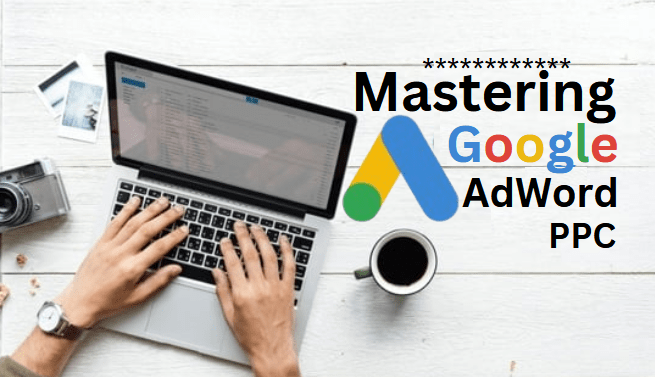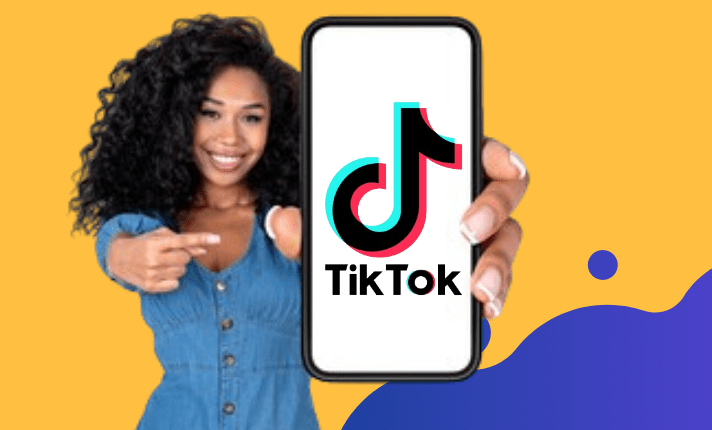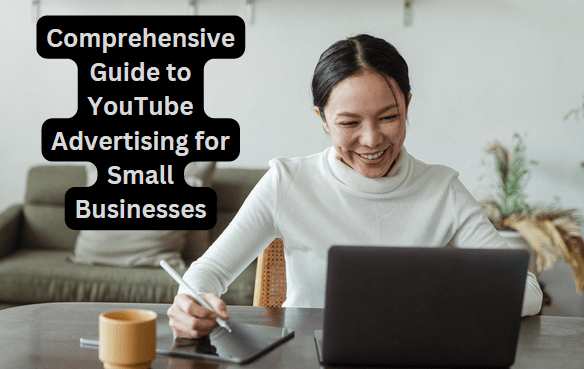In today’s digitalized business world, effective online advertising is essential for businesses aiming to reach their target audience and drive conversions. In this well detailed blog post, I will be revealing to you, the most effective strategies to mastering Google adwords ppc, it a comprehensive guide to maximizing your online advertising strategies.
Among the plethora of online advertising platforms available, Google AdWords stands out as one of the most powerful tools for businesses to connect with potential customers.
Pay-Per-Click (PPC) advertising through Google AdWords offers a highly targeted and cost-effective way to reach potential customers at the exact moment they are searching for products or services relevant to your business.
This comprehensive guide aims to delve into the intricacies of Google AdWords PPC, providing insights, strategies, and best practices to help businesses harness the full potential of this advertising platform.
Understanding Google AdWords PPC
Google AdWords is Google’s advertising platform that allows businesses to create ads that appear on Google’s search engine and other Google properties. PPC advertising, a key feature of Google AdWords, enables advertisers to bid on specific keywords relevant to their target audience. Advertisers only pay when a user clicks on their ad, making it a cost-effective advertising model. Don’t fail to read these 17 effective tips for reaching your audience with Tiktok advertisement in Nigeria in 2024.
Top 6 Benefits of Google AdWords PPC
Google AdWords, now known as Google Ads, is a powerful tool for businesses looking to expand their online presence and attract potential customers. Here are six key benefits of using Google AdWords PPC (Pay-Per-Click) advertising:
1. Targeted Advertising
Google AdWords allows you to target your ads based on specific keywords, demographics, location, devices, and even time of day. This level of targeting ensures that your ads are reaching the right audience, increasing the likelihood of conversions.
2. Immediate Results
Unlike organic search engine optimization (SEO), which can take time to see results, AdWords delivers immediate visibility for your business. Once your campaign is set up, your ads can start appearing in search results almost instantly, driving relevant traffic to your website.
3. Cost-Effective
With PPC advertising, you only pay when someone clicks on your ad, making it a cost-effective marketing strategy. Additionally, you can set a budget for your campaigns, ensuring that you never exceed your desired spending limit.
4. Measurable ROI
Google AdWords provides detailed analytics and reporting tools that allow you to track the performance of your campaigns in real-time. You can see metrics such as clicks, impressions, conversions, and cost per conversion, enabling you to measure the ROI of your advertising efforts accurately.
5. Increased Brand Visibility
By appearing at the top of search results for relevant keywords, Google AdWords helps increase your brand’s visibility and credibility. Even if users don’t click on your ads immediately, seeing your brand at the top of the page can leave a lasting impression, leading to future conversions.
6. Flexible and Scalable
AdWords offers a high level of flexibility, allowing you to easily adjust your campaigns, ad copy, and targeting settings based on performance and business objectives. Whether you’re looking to reach a local audience or expand globally, AdWords can scale with your business needs.
Overall, Google AdWords PPC advertising offers businesses a highly effective way to reach their target audience, drive traffic to their website, and achieve their marketing goals. It will interest you to take a look at these 12 top notch reasons you should consider yelp advertising for small businesses now.
6 Best Ways to Get Started with Google AdWords PPC
Everything that is worth doing is worth doing well, to get started with Google AdWords PPC, the following steps must be carefully adhered to:
1. Creating an AdWords Account
To get started with Google AdWords PPC, businesses need to create an AdWords account. This involves signing up with a Google account, providing basic business information, and setting up billing details.
2. Keyword Research
Keyword research is crucial for identifying relevant keywords that potential customers are using to search for products or services. Tools like Google Keyword Planner can help businesses discover relevant keywords and estimate their search volume and competition.
3. Campaign Setup
AdWords campaigns are organized into campaigns, ad groups, ads, and keywords. Businesses need to create campaigns based on their advertising goals, such as promoting products, driving website traffic, or generating leads.
4. Ad Creation
Compelling ad copy and engaging creatives are essential for attracting clicks and driving conversions. Advertisers should create ads that are relevant, persuasive, and tailored to their target audience.
5. Setting Bids and Budgets
Advertisers need to set bids for their keywords, indicating the maximum amount they are willing to pay for a click. AdWords offers different bidding strategies, including manual CPC, automated bidding, and enhanced CPC, allowing advertisers to optimize their bids for maximum ROI.
6. Monitoring and Optimization
Once campaigns are live, continuous monitoring and optimization are essential for maximizing performance. Advertisers should regularly review campaign metrics, test different ad variations, adjust bids, and refine targeting to improve ad performance and ROI.
Check out this comprehensive guide to YouTube advertising for small businesses in 2024.
5 Best Advanced Strategies for Google AdWords PPC
Advanced strategies for Google AdWords PPC (now known as Google Ads) can help optimize your campaigns for better performance and ROI. Here are some advanced strategies you can implement:
1. Ad Extensions
Ad extensions provide additional information to users and enhance ad visibility. AdWords offers various ad extensions, including site links, callouts, location extensions, and call extensions, allowing advertisers to make their ads more informative and compelling.
2. Remarketing
Remarketing allows advertisers to target users who have previously visited their website or interacted with their ads. By serving targeted ads to these users as they browse the web, advertisers can re-engage them and drive conversions.
3. Audience Targeting
AdWords offers sophisticated audience targeting options, allowing advertisers to reach specific audience segments based on demographics, interests, behaviors, and more. By targeting the right audience, advertisers can improve ad relevance and performance.
4. Ad Schedule and Bid Adjustments
Advertisers can schedule their ads to appear at specific times or days of the week and adjust bids accordingly. This allows businesses to optimize ad delivery based on when their target audience is most active and maximize ROI.
5. Conversion Tracking
Setting up conversion tracking is essential for measuring the effectiveness of ad campaigns and optimizing for conversions. AdWords allows advertisers to track various types of conversions, such as website purchases, form submissions, and phone calls, enabling them to attribute conversions to specific ads and keywords.
You will be glad you read these step by step guide for effective direct mail marketing for small businesses in 2024.
4 Common Pitfalls and Best Practices
Common pitfalls and best practices can vary depending on the context, but here are some general ones that apply to various areas such as project management, software development, communication, and personal development:
1. Ignoring Quality Score
Quality Score is a crucial metric in AdWords that measures the relevance and quality of ads, keywords, and landing pages. Advertisers should focus on improving Quality Score by creating relevant ads, choosing targeted keywords, and optimizing landing pages to enhance ad performance and reduce costs.
2. Neglecting Negative Keywords
Negative keywords are terms for which ads should not be shown. By adding negative keywords to their campaigns, advertisers can prevent their ads from appearing for irrelevant searches, improve ad targeting, and reduce wasted ad spend.
3. Failing to Test and Iterate
Testing different ad variations, bidding strategies, and targeting options is essential for optimizing ad performance. Advertisers should continuously test and iterate their campaigns to identify what works best and refine their strategies accordingly.
4. Overlooking Mobile Optimization
With the increasing use of mobile devices, optimizing ads for mobile is crucial for reaching and engaging mobile users effectively. Advertisers should ensure their ads are mobile-friendly, use responsive design, and leverage mobile-specific ad formats to maximize performance on mobile devices.
In conclusion, when you understand the fundamentals of Google AdWords PPC, implementing best practices, and continuously optimizing campaigns, you can maximize your online advertising efforts and achieve your desired marketing goals in today’s competitive digital landscape. Check out these top 8 reasons why the elites will keep on using Google advertising for their businesses.




